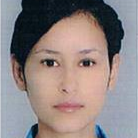International Journal of Computer Network and Information Security (IJCNIS)
IJCNIS Vol. 8, No. 5, 8 May 2016
Cover page and Table of Contents: PDF (size: 527KB)
Impact of Wireless Channel Model on 802.15.6 Standard Performance for Wireless Body Sensor Networks
Full Text (PDF, 527KB), PP.1-8
Views: 0 Downloads: 0
Author(s)
Index Terms
Wireless Body Sensor Networks, Wireless Sensor Networks, path loss, medical applications, channel modeling, IEEE 802.15.6
Abstract
Wireless Body Sensor Network (WBAN) is a set of wearable and implantable devices capable of measuring physiological parameters and monitoring patient with chronic disease where early diagnosis is highly demanded. Several models introduced the general characterization of WBAN devices path loss considering possible shadowing due to obstruction of the signal (by the human body or any other obstacles) as well as the different postures of the human body. This paper aims at reporting an overview of WBSNs technologies, particular applications, system architecture and channel modeling. Emphasis is given to the IEEE 802.15.6 standard which enables the development of WBAN for medical and non-medical applications. The standard's performance within a time based variation and log-distance path loss is presented based on various simulations.
Cite This Paper
Maryam El azhari, Ahmed Toumanari, Rachid Latif, Nadya El moussaid, "Impact of Wireless Channel Model on 802.15.6 Standard Performance for Wireless Body Sensor Networks", International Journal of Computer Network and Information Security(IJCNIS), Vol.8, No.5, pp.1-8, 2016. DOI:10.5815/ijcnis.2016.05.01
Reference
[1]Chen, S.L., Lee, H.Y., Chen, C.A., Lin, C.C., Luo, C.H.: A wireless body sensor network system for healthcare monitoring application. In: Biomedical Circuits and Systems Conference, 2007. BIOCAS 2007. IEEE, pp. 243{246 (2007).
doi:http://dx.doi.org/10.1109/BIOCAS.2007.446335410.1109/BIOCAS.2007.4463354.
[2]Olivo, J., Carrara, S., Micheli, G.D.: Energy Harvesting and Remote Powering for Implantable Biosensors. IEEE Sensors Journal 11, 1573{1586 (2011). doi:http://dx.doi.org/10.1109/JSEN.2010.208504210.1109/JSEN.2010.2085042.
[3]Lee, S., Annavaram, M.: Wireless body area networks: Where does energy go? In: IISWC, pp. 25{35. IEEE Computer Society, (2012). http://dblp.uni-trier.de/db/conf/iiswc/iiswc2012.htmlLeeA12.
[4]Jamil. Y. Khan and Mehmet R. Yuce, “Wireless Body Area Network (WBAN) for Medical Applications”, New Developments in Biomedical Engineering, Edited by Domenico Campolo, ISBN 978-953-7619-57-2, 724 pages, Publisher: InTech, Chapters published January 01, 2010 under CC BY-NC-SA 3.0 license.
[5]Liu, W., Humayun, M.S.: Articial retinal prosthesis to restore vision for the blind. In: Electronic-Enhanced Optics, Optical Sensing in Semiconductor Manufacturing, Electro- Optics in Space, Broadband Optical Networks, 2000. Digest of the LEOS Summer Topical Meetings, pp. 61{62 (2000).
doi:http://dx.doi.org/10.1109/LEOSST.2000.86969910.1109/LEOSST.2000.869699.
[6]Malan, D., Thaddeus, F.J., Welsh, M., Moulton, S.: CodeBlue: An Ad Hoc Sensor Network Infrastructure for Emergency Medical Care. In: Proceeding on the MobiSys 2004 Workshop on Applications of Mobile Embedded Systems, pp. 12{14. ACM, (2004).
[7]Shnayder, V., Chen, B.-r., Lorincz, K., Jones, T.R.F.F., Welsh, M.: Sensor networks for medical care. In: Proceedings of the 3rd International Conference on Embedded Networked Sensor Systems. SenSys '05, pp.314 {314. ACM, New York, NY, USA (2005). doi:http://dx.doi.org/10.1145/1098918.109897910.1145/1098918.1098979.http://doi.acm.org/10.1145/1098918.1098979.
[8]Kwak, K.S., Ullah, S., Ullah, N.: An overview of ieee 802.15.6 standard. In: Applied Sciences in Biomedical and Communication Technologies (ISABEL), 2010 3rd International Symposium On, pp. 1{6 (2010). doi:http://dx.doi.org/10.1109/ISABEL.2010.570286710.1109/ISABEL.2010.5702867.
[9]Cotton, S.L., McKernan, A., Ali, A.J., Scanlon, W.G.: An experimental study on the impact of human body shadowing in on-body communications channels at 2.45 ghz. In: Antennas and Propagation (EUCAP), Proceedings of the 5th European Conference On, pp. 3133{3137 (2011).
[10]Hausman, S., Januszkiewicz, Impact of indoor environment on path loss in body area networks. Sensors 14(10), 19551 (2014).
doi:http://dx.doi.org/10.3390/s14101955110.3390/s141019551.
[11]Chau, C.K., Wahab, M.H., Qin, F., Wang, Y., Yang, Y.: Battery recovery aware sensor networks. In: Modeling and Optimization in Mobile, Ad Hoc, and Wireless Networks, 2009. WiOPT 2009. 7th International Symposium On, pp. 1{9 (2009). doi:http://dx.doi.org/10.1109/WIOPT.2009.529162310.1109/WIOPT.2009.5291623.
[12]Boulis, A., Tselishchev, Y., Libman, L., Smith, D., Hanlen, L.: Impact of wireless channel temporal variation on mac design for body area networks. ACM Trans. Embed. Comput. Syst. 11(S2), 51{15118 (2012). doi:http://dx.doi.org/10.1145/2331147.233116110.1145/2331147.2331161.
[13]Alam, M.M., Hamida, E.B.: Surveying wearable human assistive technology for life and safety critical applications: Standards, challenges and opportunities. Sensors 14(5), 9153 (2014). doi:http://dx.doi.org/10.3390/s14050915310.3390/s140509153.
[14]Pediaditakis, D., Tselishchev, Y., Boulis, A.: Performance and scalability evaluation of the castalia wireless sensor network simulator. In: Proceedings of the 3rd International ICST Conference on Simulation Tools and Techniques. SIMUTools '10, pp. 53{1536. ICST (Institute for Computer Sciences, Social-Informatics and Telecommunications Engineering), ICST, Brussels, Belgium, Belgium (2010). doi:http://dx.doi.org/10.4108/ICST.SIMUTOOLS2010.872710.4108/ICST.SIMUTOOLS2010.8727.http://dx.doi.org/10.4108/ICST.SIMUTOOLS2010.8727.
[15]Maryam El azhari, Ahmed Toumanari, Rachid Latif, “Study of MAC Protocols for Mobile Wireless Body Sensor Networks”, Network and Complex Systems, Vol 4, No 4 (2014).
[16]S. Saqaeeyan, M. Roshanzadeh, "IEATH: Improved Energy Aware and Two Hop Multipath Routing Protocol in Wireless Sensor Networks", IJCNIS, vol.4, no.5, pp.22-28, 2012.
[17]Ding, C., Wu, X., lv, Z.: Design and implementation of the zigbee-based body sensor network system. In: Proceedings of the 5th International Conference on Wireless Communications, Networking and Mobile Computing. WiCOM'09, pp. 3402 {3405. IEEE Press, Piscataway, NJ, USA (2009). http://dl.acm.org/citation.cfm?id=1737966.1738296.



